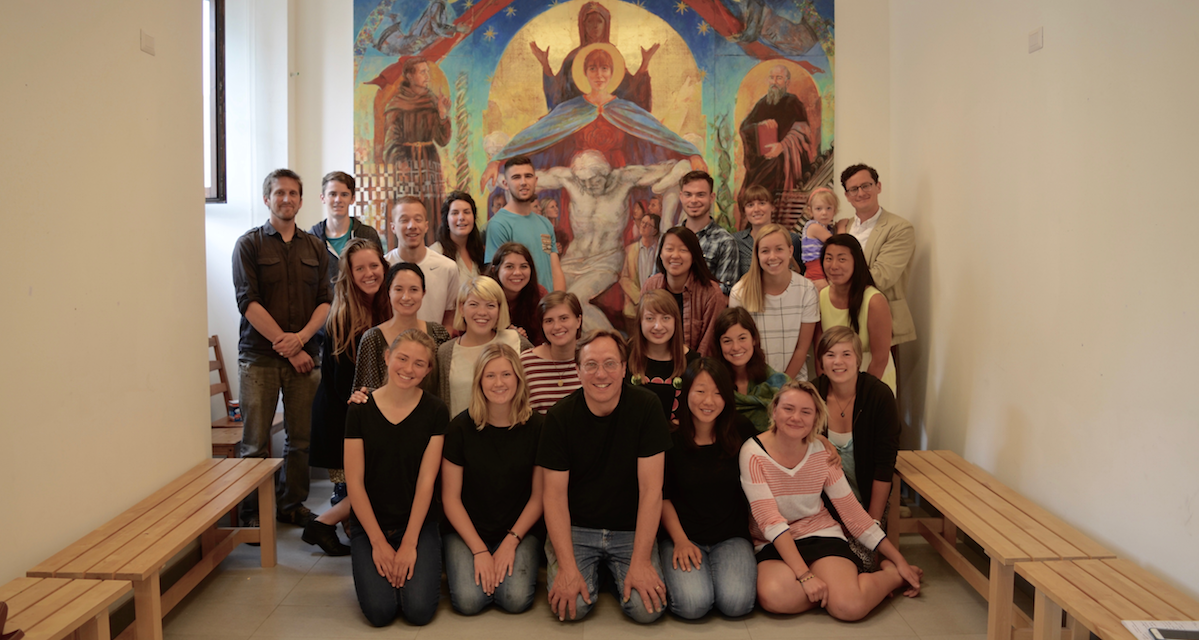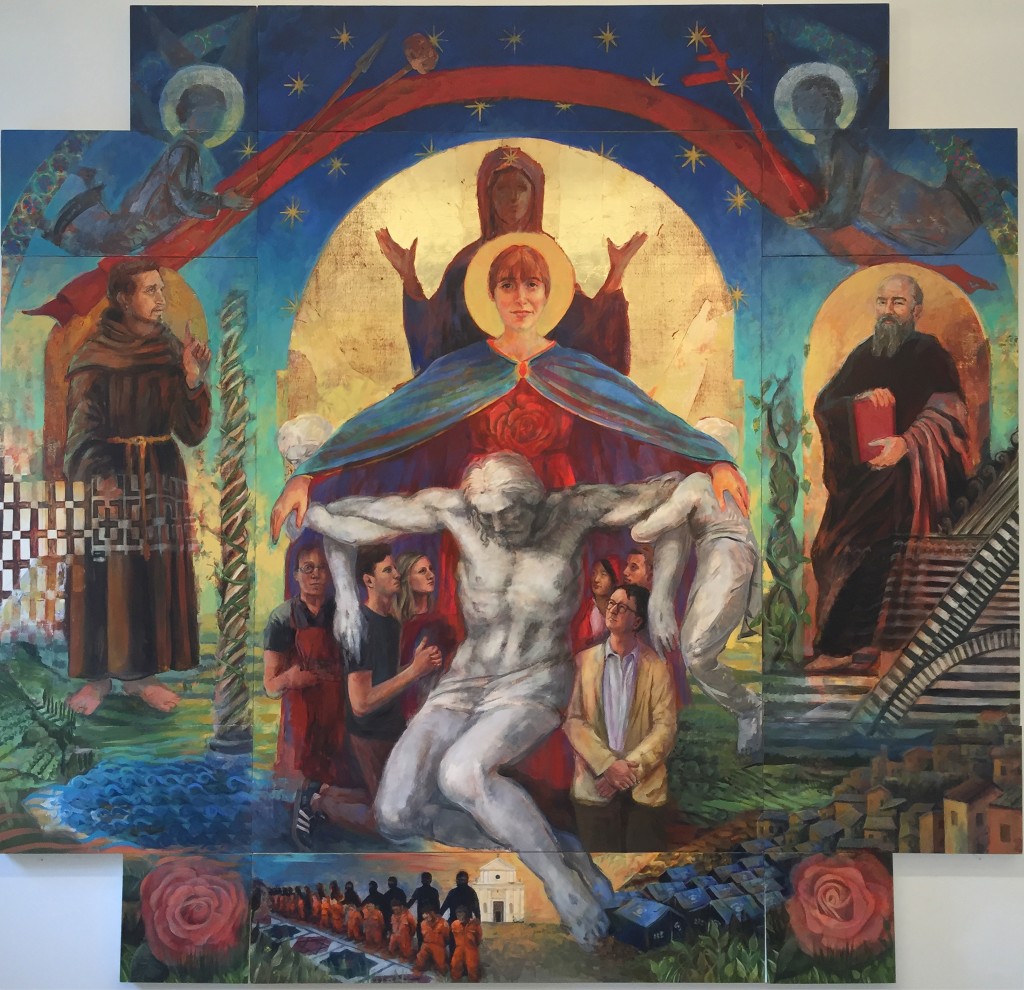Under the Tent: The Unification of Artistic and Religious Community
Art, nature, and culture could be considered the Trinitarian elements of the Gordon IN Orvieto program. Each fall and spring semester, students from Gordon and other Christian colleges come together in this small city on a hill to become immersed in the Italian community through church, festivals, cafes and art.
This past spring Bruce Herman, chair of the Art Department, worked with students to create a mural that celebrates Orvieto, its staff, and Christianity. With bold colors, religious iconography and symbolism, and layering themes, this mural now hangs in the humanities room of the Conventi di Servi, where Gordon students stay during their semester, to remind those who enter that this—the convent, Orvieto and Christianity—is communal.
The mural contains various layers of themes and sub-themes that flow seamlessly together. Eyes are immediately drawn to the representation of teaching assistant Karen Bergman, who dons the persona of Mary. On the left panel is program director Matthew Doll as St. Francis, and on the right, program founder John Skillen as St. Benedict. But while these faces are present within the mural, the motive was not to highlight the staff. There was a much larger goal at hand.
Harkening to Eastern Orthodox, Roman Catholic and Protestant traditions, the mural reminds us that we are unified under the broken body of Christ, under the tent of Mary’s mantle. This achieves visual ecumenism—a common ground between different religious traditions. For students in the Orvieto program, finding common ground between cultures, religion and nature is a semester-long journey.
The urgency of finding common ground is apparent at the very bottom of the mural, with images of Coptic martyrs beheaded by ISIS and rows of tents for Syrian refugees. The martyrs are kneeling at the base of the Duomo (Orvieto’s cathedral); the tents morph into the very city of Orvieto itself. The covering of Mary’s mantle over the martyrs, refugees and worshippers of Christ demonstrate the unity within each group. The gospel message rings true: “Come to me all you who are weary and burdened and I will give you rest” (Matthew 11:28).
The mantle also recalls the sacrificial coverings provided by God for Adam and Eve as they fled the Garden of Eden, as well as the tent of meeting where the Israelites would temporarily come together in community—much the way Gordon students gather in the temporary home of Orvieto.
Allusions to Franciscan and Benedictine traditions illustrate the connection between culture, religion and nature. St. Francis (Doll) emphasizes the importance of nature as he is surrounded by olive groves, vineyards and oceans. St. Benedict (Skillen) is painted with more structural themes, holding a book that represents culture and knowledge. While on separate sides of the mural, they show unity within the program and Christianity. The marriage between nature and culture is a vital element in gaining a new, worthwhile perspective not just on Italian culture, but of the world.
“The mural is meant to embody the program as well as to connect it to the universal church,” says Herman. “We are sending students to learn about the totality and the universal. Tradition is not ossified, but constantly growing,”
By Alex Rivera ’16, English language and literature
 The Bell
The Bell
